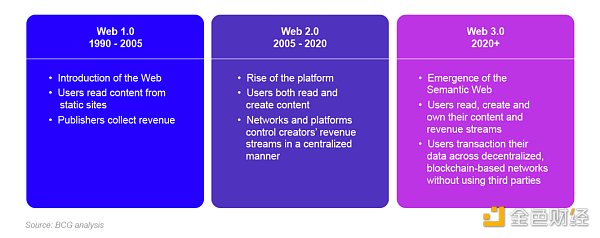Has Web3 effectively solved the problems in Web2 marketing?
Has Web3 solved Web2 marketing problems?Written by: Lucian Urbach Translation: DeepTech
The most common words associated with Web3 include blockchain, bitcoin, ethereum, DeFi, and NFTs. For some, these terms remain unknown territory, while for others, they are standard fare.
In the past decade, a whole industry has been built up that is currently challenging and changing many aspects of our daily lives. For newcomers and industry experts alike, there is one common denominator, and that is Web3 marketing.
Without going into too much detail, marketing and advertising in Web3 have been around for a while, but recently they have reached a stage where they are creating a whole new industry that goes beyond Web3. In this article, we will explore why this is happening and how it is helping founders improve user acquisition in the (next wave of adoption).
- First Impressions of Threads: Is this “Twitter Killer” any good?
- Meta launches Twitter competitor Threads:
- Review: “Twitter Killer” Threads officially launched. How does it perform?
Looking at the current state of marketing, Web2 marketing has become an integral part of today’s business landscape, and it’s hard to imagine what it would be like without it.
However, for various reasons, the traditional Web2 marketing model has lost its effectiveness. These reasons include intense competition, ad blindness, ad-blocking, algorithms, and closed ecosystems (i.e., data silos). Due to these issues, founders have had difficulty attracting and incentivizing their target audiences.
In contrast, Web3 marketing takes a different approach to address the problems faced by Web2 marketing.
Web3 marketing no longer focuses solely on the mass market, but places users at the center. It leverages the entire ecosystem, rather than a single data silo, to achieve shared ownership and value and provide unique experiences.
Thanks to the support of underlying technology, companies, founders, and marketers can now better understand their target audiences. Through two-way interaction, they can engage with users more deeply, achieving cost-effective business growth and higher customer retention.
What is Web2 marketing?
Web 2.0 marketing refers to the use of web-based interactive platforms and social media to promote products or services online. Common Web2 marketing strategies include creating engaging social media content, building online communities around brands, leveraging influencers, utilizing user-generated content, and using targeted online advertising.
Overall, the focus of Web2 marketing is to establish a strong online image, promote customer engagement, and engage in valuable interactions with customers to drive business growth.
How is Web3 Marketing Different?
A good way to understand the difference between Web2 and Web3 marketing is to compare their marketing mixes.
-
Web2 marketing does not focus on users, but rather the masses, lacking incentive measures to attract user participation.
-
Web3 marketing, on the other hand, is user-centric, aimed at building customer relationships and interactions to create mutual value. This relationship is nurtured through shared ownership, uniqueness, culture, and incentive measures.

One of the reasons for this difference is the technological limitations of Web2. Web2 can be classified as one-way participation, where customers are mostly limited to receiving information, while Web3 enables customers to interact with their brand.

How Does Web3 Marketing Solve the Problems of Web2 Marketing?
Web3 marketing offers many exciting opportunities that can set businesses, founders, and marketers apart from traditional Web2 marketing methods. Here are some of the biggest opportunities:
-
Decentralization: Web3 is built on decentralized technology, which can provide greater transparency and security in marketing campaigns. This is particularly important in areas such as data privacy, advertising fraud prevention, and consumer trust.
-
Immersive Experience: Web3 technologies such as virtual and augmented reality can provide consumers with more immersive and engaging experiences, enabling businesses to create more memorable and impactful marketing campaigns.
-
Micro-Payments: Web3 technology can facilitate micro-payments and revenue models based on micro-payments, such as pay-per-action or pay-per-view. This can provide businesses with greater revenue opportunities, while also giving consumers greater control over what they consume and the income they earn through micro-transactions.
-
User Ownership: Web3 makes user ownership possible, allowing consumers to own their own data, identity, and online assets. This can create new marketing opportunities for businesses that are focused on user empowerment and incentives.
-
Community Building: Web3 technologies such as decentralized social networks can create more positive and engaged communities around products and brands, enabling businesses to build deeper relationships with customers.
-
Analytics: Due to the transparency and availability of data with blockchain technology, data analytics can be applied to the entire ecosystem. Marketers are no longer limited to company data centers, but can access all data.
Overall, the greatest opportunities for Web3 marketing lie in the unique features and advantages of decentralized technology, such as transparency, personalization, and user empowerment. Web3 marketing addresses some of the pain points faced by Web2 marketing, especially in areas such as customer engagement, loyalty, analytics, ownership, and data availability.
What else can be done?
As mentioned above, Web3 marketing addresses various pain points of Web2 marketing. Below are some additional use cases and companies that have already applied this technology.
Loyalty programs
-
Personalized rewards: In Web3, users verify their identity and loyalty to a brand through NFTs issued by the brand, based on wallet login. They then share information in exchange for early access or discounts for attending launch events, among other perks.
-
Liquidity and value accumulation, meaning that if a loyalty program performs well, it will have inherent value that can be monetized/sold.
-
On-chain analytics insights: On-chain analytics provide detailed and real-time analytics data. Marketers can get accurate metrics on ad campaign performance, conversion rates, user engagement, and customer behavior. Since the data is recorded directly on the blockchain, it is not easily tampered with or subject to discrepancies, making it highly reliable. These insights enable marketers to optimize strategies and make data-driven decisions.
-
Measuring engagement rather than sales: Since there is no interchangeability between loyalty program members in Web3, each member has unique behavior and consumption attributes, activity levels, and redemption data. Research shows that highly engaged loyalty program members spend 25% more than inactive members. Measuring fine-grained engagement data using Web3 technology can provide more insights about active and inactive users, rather than just traditional metrics like spending and membership count.
Customer engagement
-
CaaS (Community-as-a-Service): A new service that aims to build and manage communities for other companies. For example, Tribally provides community services for Axie.infinity from roadmap to day-to-day operations such as Discord and Telegram.
Physical empowerment: Digital twins of physical products
We will continue to update Blocking; if you have any questions or suggestions, please contact us!
Was this article helpful?
93 out of 132 found this helpful
Related articles
- Dr. Lu Qi, the founder of MiraclePlus, says that AI and Web3 will create a new data-driven society.
- Interview with Justin Sun: Web3 Yu’ebao stUSDT, Tron’s Ambition to Connect DeFi and TradFi
- Custom Collateral Tokens? A Summary of GMX’s New V2 Version HighlightsGMX recently released its new V2 version
- Step-by-step guide on how to create an ERC-6551 account for NFTs
- ERC-6551 Protocol: Enabling NFTs to Achieve QQ-Style Combination Nesting
- In-depth explanation of Web3 game engine: Origins and development status of racing tracks, as well as network effects.
- An Explanation of Loopring L3: A Specific Application Rollup Deployed on a Universal Rollup




